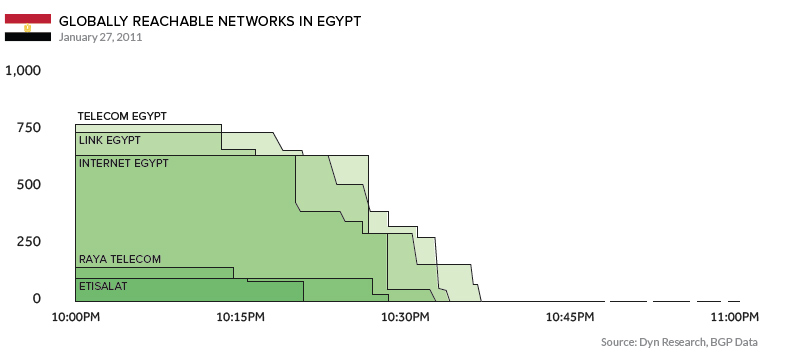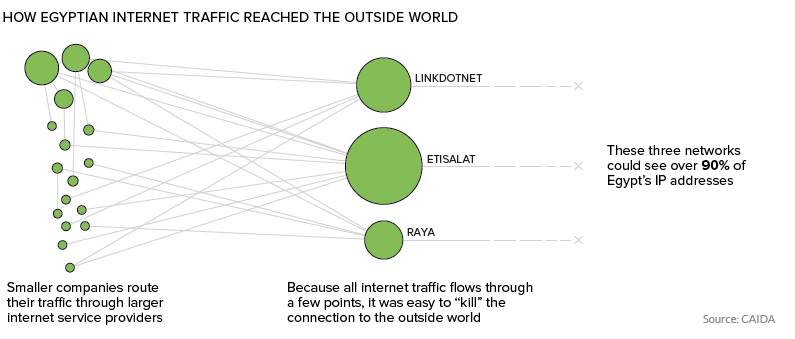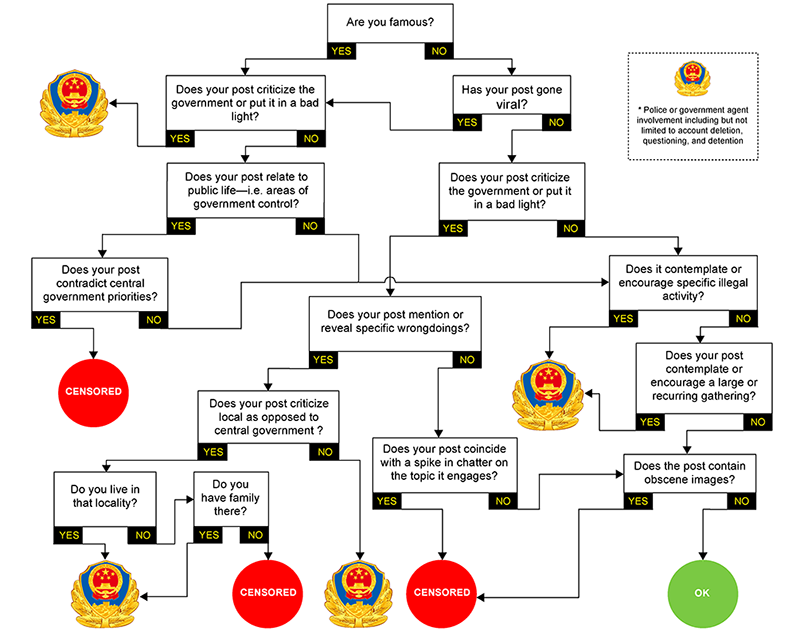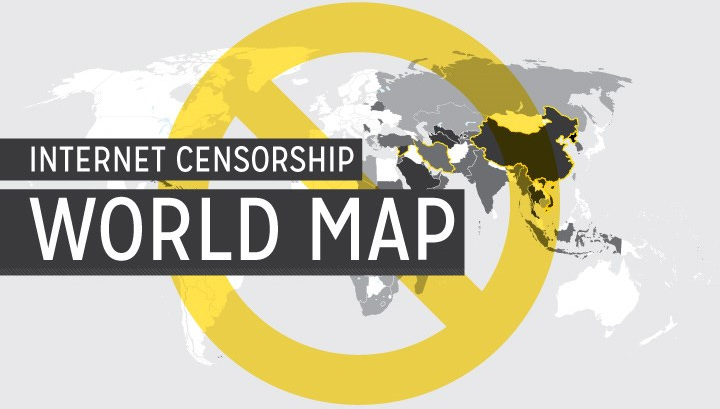Technology
Map: Internet Censorship Around the World
In January 2011, Egyptian activists, inspired by a successful uprising in Tunisia, began organizing a demonstration using Facebook. In a matter of days, thousands of protesters – who learned about the event through the social media platform – gathered in Cairo’s Tahrir Square to protest the longstanding Mubarak regime.
Then, in an attempt to quash civil unrest, the Egyptian government soon took the bold step of cutting off the country’s internet access. As the size of protests swelled from thousands to millions of people, the Mubarak regime quickly realized their mistake: never cut off a millennial’s internet access.
Mubarak was ultimately forced to resign after just 18 days of massive protests, but in that time Egypt’s Arab Spring demonstrated two major things: (1) the incredible organizing power of the internet, and (2) the how quickly a government could slam the door on the free flow of information.

The Egyptian government was able to quickly and effectively shut down the chokepoints that connect its citizens to the outside world. Etisalat, for example, is a centrally located routing system that could see up to 58% of Egypt’s IP addresses.
In other words, Mubarak was essentially able to blockade every website in the world by making a few simple phone calls.

A New Era Of Internet Censorship
Egypt’s dramatic internet shutdown became a new template for other precarious regimes, but also sparked a broader global conversation around online censorship.
Today’s infographic comes to us from WhoIsHostingThis and it provides a detailed look at varying levels of internet censorship around the world today.

Internet users in North America and Europe enjoy relatively unfettered access to online content, while most countries in Asia, Africa, and the Middle East have some level of censorship. Torrenting is restricted in almost every country in the world, with a notable exception being Switzerland, where a laissez-faire approach is applied to downloading content for personal consumption.
It’s also worth noting that this map does not address government surveillance, which is ubiquitous even in countries with high levels of internet freedom.
The Anti-Information Age
If you want to liberate a country, give them the internet
–Wael Ghonim, Egyptian internet activist
Much of the world’s population accesses an internet that is at least partially censored. Countries have different motivations for restricting access and filtering content. Below are a few high-profile examples.
China
When most people think of internet censorship, China springs to mind. This makes sense as the country has a small army (upwards of 50,000 people) monitoring internet activity at all times. Also, much like Egypt, the government forces all online traffic through a mere three central routing systems. This makes it easy for censors to sift through all data entering and leaving the country.
China’s censorship apparatus is so advanced, it can take a very granular approach to repression and enforcement.

Turkey
The country’s swelling blacklist of 100,000 websites, coupled with harsh penalties for any whiff of anti-government sentiment, have created an extremely restrictive environment for Turkish internet users.
Ethiopia
In 2016, the government of Ethiopia blocked access to social networking sites to prevent cheating during the university entrance exam period.
North Korea
Unauthorized surfing of the internet is a dangerous activity in the Hermit Kingdom. The primary smartphones, tablets, operating systems, and browsers used in the country were all developed by the government, and content on the 5,000 or so accessible websites is tightly controlled.
Slipping Through the Firewall
Even when censoring measures are pervasive and effective, people continually find ways to slip between the cracks. For years, people have used proxy servers and virtual private networks (VPNs) to access content beyond their country’s censorship wall, but censors are getting better at discovering proxy servers and simply blocking them as they would any other site.
As a result, newer techniques are gaining popularity:
Steganography
Steganography is the science of hiding information. Basically, an innocuous file like an image can be stealthily encoded with information to evade detection by censors. Even changing a single pixel on a series of images can be used to relay a message, provided the recipient knows what to look for.
Refraction Networking
This circumvention tool uses partnerships with ISPs and other network operators to provide Internet freedom to users. Rather than trying to hide individual proxies, whole networks outside the censored country can become a conduit for the free flow of information.
Technology
All of the Grants Given by the U.S. CHIPS Act
Intel, TSMC, and more have received billions in subsidies from the U.S. CHIPS Act in 2024.

All of the Grants Given by the U.S. CHIPS Act
This was originally posted on our Voronoi app. Download the app for free on iOS or Android and discover incredible data-driven charts from a variety of trusted sources.
This visualization shows which companies are receiving grants from the U.S. CHIPS Act, as of April 25, 2024. The CHIPS Act is a federal statute signed into law by President Joe Biden that authorizes $280 billion in new funding to boost domestic research and manufacturing of semiconductors.
The grant amounts visualized in this graphic are intended to accelerate the production of semiconductor fabrication plants (fabs) across the United States.
Data and Company Highlights
The figures we used to create this graphic were collected from a variety of public news sources. The Semiconductor Industry Association (SIA) also maintains a tracker for CHIPS Act recipients, though at the time of writing it does not have the latest details for Micron.
| Company | Federal Grant Amount | Anticipated Investment From Company |
|---|---|---|
| 🇺🇸 Intel | $8,500,000,000 | $100,000,000,000 |
| 🇹🇼 TSMC | $6,600,000,000 | $65,000,000,000 |
| 🇰🇷 Samsung | $6,400,000,000 | $45,000,000,000 |
| 🇺🇸 Micron | $6,100,000,000 | $50,000,000,000 |
| 🇺🇸 GlobalFoundries | $1,500,000,000 | $12,000,000,000 |
| 🇺🇸 Microchip | $162,000,000 | N/A |
| 🇬🇧 BAE Systems | $35,000,000 | N/A |
BAE Systems was not included in the graphic due to size limitations
Intel’s Massive Plans
Intel is receiving the largest share of the pie, with $8.5 billion in grants (plus an additional $11 billion in government loans). This grant accounts for 22% of the CHIPS Act’s total subsidies for chip production.
From Intel’s side, the company is expected to invest $100 billion to construct new fabs in Arizona and Ohio, while modernizing and/or expanding existing fabs in Oregon and New Mexico. Intel could also claim another $25 billion in credits through the U.S. Treasury Department’s Investment Tax Credit.
TSMC Expands its U.S. Presence
TSMC, the world’s largest semiconductor foundry company, is receiving a hefty $6.6 billion to construct a new chip plant with three fabs in Arizona. The Taiwanese chipmaker is expected to invest $65 billion into the project.
The plant’s first fab will be up and running in the first half of 2025, leveraging 4 nm (nanometer) technology. According to TrendForce, the other fabs will produce chips on more advanced 3 nm and 2 nm processes.
The Latest Grant Goes to Micron
Micron, the only U.S.-based manufacturer of memory chips, is set to receive $6.1 billion in grants to support its plans of investing $50 billion through 2030. This investment will be used to construct new fabs in Idaho and New York.
-

 Science1 week ago
Science1 week agoVisualizing the Average Lifespans of Mammals
-

 Demographics2 weeks ago
Demographics2 weeks agoThe Smallest Gender Wage Gaps in OECD Countries
-

 United States2 weeks ago
United States2 weeks agoWhere U.S. Inflation Hit the Hardest in March 2024
-

 Green2 weeks ago
Green2 weeks agoTop Countries By Forest Growth Since 2001
-

 United States2 weeks ago
United States2 weeks agoRanked: The Largest U.S. Corporations by Number of Employees
-

 Maps2 weeks ago
Maps2 weeks agoThe Largest Earthquakes in the New York Area (1970-2024)
-

 Green2 weeks ago
Green2 weeks agoRanked: The Countries With the Most Air Pollution in 2023
-

 Green2 weeks ago
Green2 weeks agoRanking the Top 15 Countries by Carbon Tax Revenue













